1. Layers
1.1. Application
1.1.1. The Application Layer is the top layer of the OSI model.
1.1.2. Handles communication between software applications and low layer network services which enables the network to interpret the request.
1.1.3. Web Server response includes text, Graphics and specifications for content contained on the page requested.
1.1.4. - Application Layer formats web servers response back to clients browser.
1.1.5. Sends request from the client browser to the server.
1.1.6. Uses HTTP to interpret web servers response
1.2. Presentation
1.2.1. Accepts application layer data and formats it into understandable data for another application and host.
1.2.2. Presentation layer encodes information into a more compressed format.
1.2.3. Also interprets encoded information, translating it for reading.
1.2.4. Handles data encryption such as scrambling of passwords and decryption.
1.3. Session
1.3.1. Maintains connection for ongoing data exchange between two nodes.
1.3.2. Usually connection is between a remote client and an access server.
1.3.3. Keeps communication secure and synchronizes the data during the session.
1.3.4. Determines if communications have been cut off, and also figuring out how to reconnect them if they have been disconnected.
1.4. Transport
1.4.1. Accepts data from the session layer and manages end to end delivery of data.
1.4.2. Manages flow control, which is the appropriate rate of transmission based on recipients ability to receive data.
1.4.3. Uses TCP (Transmission Control Protocol)
1.4.4. Clients TCP protocol sends out a synchronization packet request for a connection to the server. the server will return a Synchronization acknowledgement packet, once that is received the client will return another acknowledgement back to the server, this three step process will confirm the connection.
1.4.5. A checksum is also run at this level, ensuring the data sent is intact.
1.4.6. Not all protocols use syn packets, making them more efficient, these are known as connectionless protocols. Sending information without confirmation of connection.
1.4.7. Breaks large data units from session layer into smaller segments. on certain networks this will improve efficiency. this is determined by the MTU or maximum transmission unit.
1.4.8. On the receiving side, the Transport layer uses a process called Reassembly, which puts all the segments back together into a usable piece of data.
1.5. Network
1.5.1. Translates network addresses into their physical counterparts.
1.5.2. Determines how to route data between the sender and receiver.
1.5.3. Addressing scheme is structured using a hierarchical system.
1.5.4. Second address assigned is the physical address which is specific to each device.
1.5.5. Accepts transport layer data and adds logical addressing information in a network header. Turning the data unit into a packet.
1.5.6. Performs routing function, which is finding the best path for the packets to be sent over the network. This is decided by: delivery priorities, network congestion, quality of service & cost of alternative routes.
1.5.7. When on a TCP/IP connection the network layer also performs something called fragmentation, this this divides the segments it receives from the transport layer into smaller packets.
1.6. Data Link
1.6.1. Divides data received by the network layer into distinct frames that can be transmitted by the physical layer.
1.6.2. Performs an algorithm known as CRC or Cyclic redundancy Check which takes the values of all the preceding fields in the frame and produces the Frame checking sequence.
1.6.3. Uses a 4 byte FCS (Frame Checking Sequence) which ensures data at its destination matches its source data exactly.
1.6.4. If FCS comparison fails then the data is re-transmitted to the destination.
1.6.5. Data Link Layer is split into two sublayers
1.6.5.1. Logical Link Control Sublayer: provides common interface reliability, and flow control
1.6.5.2. Media Access Control: appends physical address to frame.
1.7. Physical
1.7.1. The Physical Layer accepts frames from the Data Link layer and generates signals as changes in voltage, this is done by the NIC.
1.7.2. When receiving data the physical layer detects the changes in voltage which is then passed to and translated by the data link layer.
1.7.3. Sets transmission rate and also monitors data error rates but cannot perform error correction.
